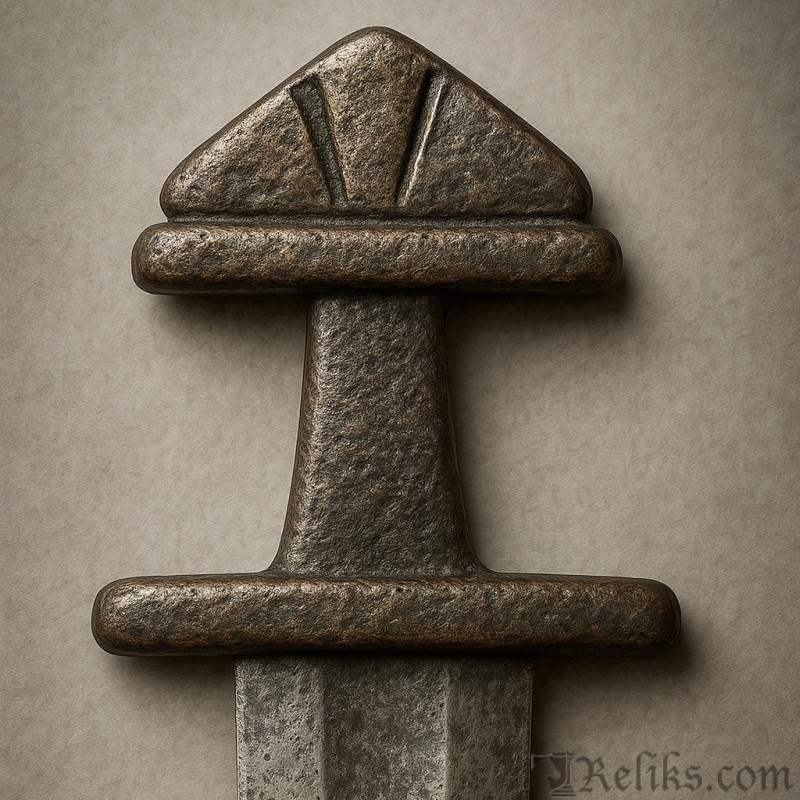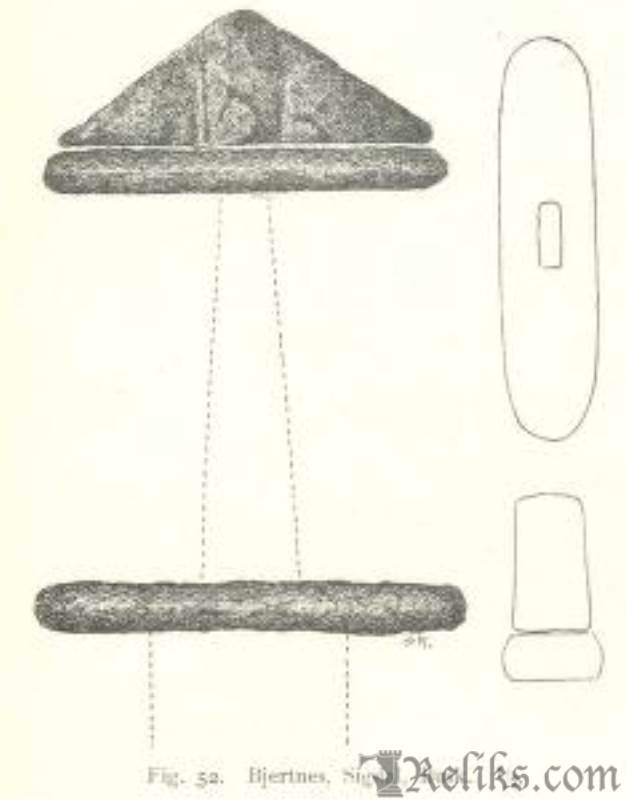Viking Sword Type A – The First of Petersen’s Typology
A Simple Beginning in the Viking Sword Story
When most people think of Viking swords, they imagine ornate hilts, decorated guards, and wide blades suited for raiding and conquest. But at the dawn of the Viking Age, swords looked very different. Petersen’s Type A, one of the earliest forms, is striking in its simplicity. These swords bridge the gap between the late Iron Age and the Viking world, offering us a glimpse of weapons carried before the Viking expansion truly began.
Archaeological Description

Viking Sword Type A – The First of Petersen’s Typology
According to Jan Petersen’s De Norske Vikingesverd (1919), Type A is characterized by low, strongly curved guards with rounded ends and a thin, three-sided pommel that is narrower than the guard. Some pommels are divided into three parts, while rare examples are divided into as many as seven. A specimen from Trøndelag even has a segmented, three-part pommel unusual for the type.
The swords are plain: no metal plating on the guards, and no rivets fixing the pommel. Instead, the tang passed through the pommel and was hammered flat to hold it in place. Blades associated with this type are usually narrow, three double-edged and one single-edged among the known finds, and none show pattern-welding or inscriptions. These are among the smaller weapons of the Viking Age arsenal — modest but functional.

Jan Petersen Sketch Type A (fig.52)
Connections to Other Types
Type A is closely related to Type H, sharing certain guard shapes but remaining simpler and lighter in appearance. Petersen himself noted that the types “overlap” and even illustrated a specimen under Type H that resembled the A-type. This suggests that sword makers were experimenting during this transitional period, before the more refined and iconic forms of the Viking Age were standardized.
The Viking Age Context
The earliest Viking swords, like Type A, belong to the 7th and 8th centuries, just as Scandinavia was shifting from the Germanic Iron Age into the Viking Age proper. At this time, swords were still relatively rare — prestige weapons carried by chieftains, local elites, and warriors of status.
Raiding was not yet in full swing. Instead, Scandinavia was marked by regional power struggles, clan warfare, and a culture where the sword was a symbol of leadership more than mass warfare. The simplicity of Type A reflects this early stage: swords were valuable but not yet the ornate status symbols they would later become.
Distribution and Finds
Type A is rare. Only eight specimens are known from Norway, with one related variant in Trøndelag. Finds are scattered — from Akershus in the southeast, to Voss and Luster in western Norway, to Stryn in Nordfjord, and even as far as Nærø in Nord-Trøndelag.
This scattered distribution shows no regional center of production. Instead, the type likely reflects a general, early form of sword-making before workshops and styles began to specialize. Interestingly, finds with Type A swords also contained axes of early types, shield bosses, and in one case, a single-edged sword without guards — all pointing to a transitional phase in weapon design.
For Collectors and Enthusiasts
To modern eyes, Type A may seem plain compared to the elaborate hilts of later Viking swords. Yet this is precisely what makes it fascinating. It represents the origin point of Viking sword typology, a design stripped of decoration but still deadly in battle. Surviving examples can be seen in Norwegian museums, though replicas are rare. For collectors, Type A offers a direct connection to the earliest days of Viking sword-making, before the age of raiding, conquest, and richly decorated hilts.
Closing Reflection
Type A may not be the most ornate of the Viking swords, but it is among the most historically significant. Its simple form tells us about a society in transition — moving from the Iron Age into the Viking Age, from local chieftains to seafaring raiders. As we continue through Petersen’s typology, the story of Viking swords becomes one of increasing sophistication, power, and symbolism.
Core classification based on Jan Petersen, De Norske Vikingesverd (1919). Additional commentary by Reliks.com.